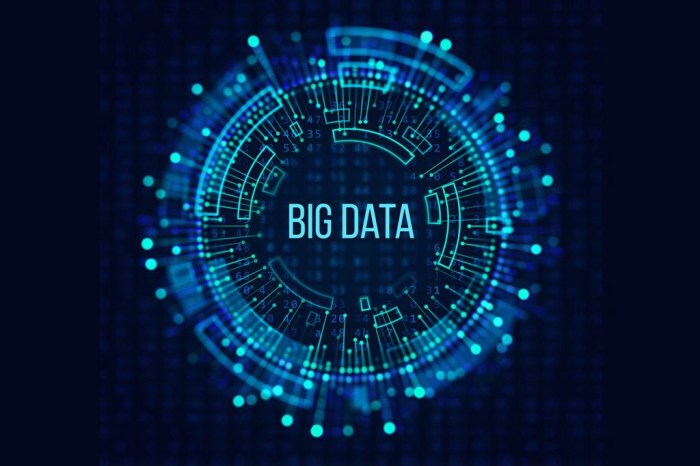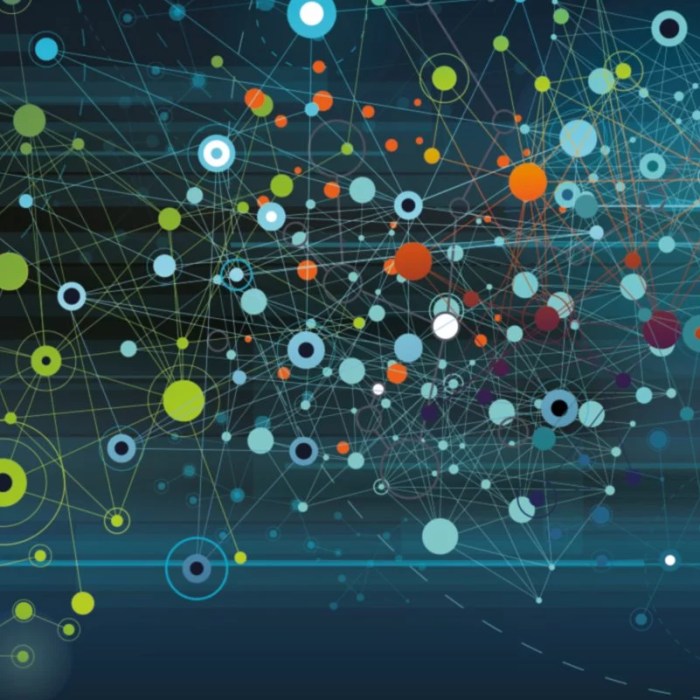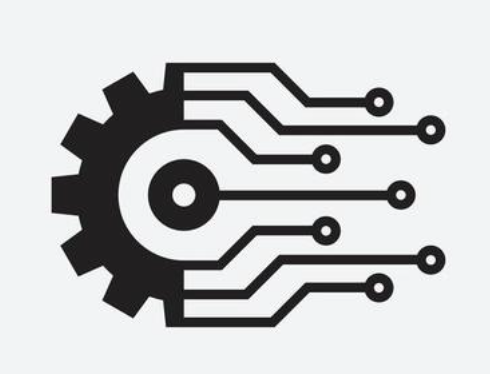Big Data, a term that has become synonymous with the vast amounts of information generated daily, has revolutionized the way we live, work, and interact with the world around us. From social media feeds to sensor data, the sheer volume, velocity, and variety of data have created unprecedented opportunities for insights and innovation.
Understanding the characteristics of Big Data, its sources, and the technologies used to manage and analyze it is crucial for businesses and individuals alike. This exploration delves into the core concepts of Big Data, highlighting its applications, ethical considerations, and future trends.
Sources of Big Data
Big data originates from various sources, each contributing to the massive volume, velocity, and variety that characterizes it. Understanding these sources is crucial for comprehending the nature of big data and its impact on various industries.
Social Media
Social media platforms like Facebook, Twitter, Instagram, and YouTube generate a vast amount of data. User interactions, posts, comments, likes, shares, and other activities create a continuous stream of data. This data provides insights into user behavior, trends, and sentiment analysis.
Sensors
The Internet of Things (IoT) has revolutionized data generation through the use of sensors. Sensors embedded in devices collect data on various parameters, including temperature, pressure, location, and movement. This data is used in diverse applications, such as smart homes, industrial automation, and environmental monitoring.
Transactions
Every transaction, whether online or offline, generates data. Online transactions on e-commerce platforms, financial institutions, and other businesses provide valuable insights into customer behavior, purchasing patterns, and market trends.
Other Sources
Besides the primary sources mentioned above, other sources contribute significantly to big data. These include:
- Machine-generated data:Logs, system performance data, and other machine-generated data provide insights into system health, efficiency, and potential issues.
- Government data:Government agencies collect and publish a wide range of data on demographics, economy, healthcare, and other areas. This data is valuable for research, policy development, and decision-making.
- Scientific data:Research institutions and scientific experiments generate massive amounts of data, such as genomic data, climate data, and astronomical observations.
The Role of the Internet of Things (IoT)
The IoT plays a pivotal role in generating big data. It refers to the interconnected network of devices, vehicles, buildings, and other objects that collect and exchange data. The sheer number of IoT devices, estimated to reach billions by 2025, creates an unprecedented volume of data.
This data is used for various purposes, including:
- Real-time monitoring:IoT sensors enable real-time monitoring of various parameters, such as temperature, pressure, and location, in diverse applications.
- Predictive maintenance:By analyzing data from sensors, companies can predict equipment failures and schedule maintenance proactively, reducing downtime and costs.
- Smart cities:IoT data is used to optimize traffic flow, manage energy consumption, and improve public safety in smart cities.
Data Collection Methods
Different sources employ diverse data collection methods:
- Social media:Data is collected through user interactions, posts, comments, likes, and shares. This data is often publicly available, but some platforms require user consent for data collection.
- Sensors:Data is collected through sensors embedded in devices. These sensors measure various parameters and transmit data to a central system for analysis.
- Transactions:Data is collected through online and offline transactions. This data includes customer information, purchase history, and transaction details.
- Other sources:Data collection methods vary depending on the source. For example, government data is collected through surveys, censuses, and administrative records, while scientific data is collected through experiments, observations, and simulations.
Applications of Big Data

Big data analysis has become a transformative force across numerous industries, unlocking insights and driving innovation. By leveraging the vast amounts of data generated daily, businesses can gain a deeper understanding of their customers, optimize operations, and make data-driven decisions.
Healthcare
Big data analysis plays a crucial role in improving healthcare outcomes and patient care.
- Personalized Medicine:Analyzing patient data, including medical records, genetic information, and lifestyle factors, allows healthcare providers to tailor treatments to individual needs, leading to more effective therapies and reduced side effects.
- Disease Prediction and Prevention:By identifying patterns and trends in large datasets, healthcare professionals can predict outbreaks of infectious diseases, develop early detection strategies, and implement preventive measures.
- Drug Discovery and Development:Big data analysis helps accelerate the process of drug discovery by identifying potential drug candidates, predicting their effectiveness, and optimizing clinical trials.
Finance
The financial industry relies heavily on big data analysis for risk management, fraud detection, and customer profiling.
- Risk Assessment:Financial institutions use big data to assess credit risk, identify potential market fluctuations, and manage investment portfolios more effectively.
- Fraud Detection:By analyzing transaction patterns and identifying anomalies, financial institutions can detect fraudulent activities in real-time, reducing financial losses and protecting customers.
- Customer Segmentation and Targeting:Big data analysis enables financial institutions to segment customers based on their financial behavior and preferences, allowing them to develop tailored products and services.
Retail, Big Data
Big data is revolutionizing the retail industry, enabling businesses to understand customer behavior, personalize shopping experiences, and optimize inventory management.
- Customer Analytics:Analyzing customer data, such as purchase history, browsing behavior, and social media interactions, provides insights into customer preferences and helps retailers personalize product recommendations and marketing campaigns.
- Inventory Optimization:Big data analysis helps retailers predict demand, optimize stock levels, and reduce inventory waste by analyzing historical sales data, seasonal trends, and external factors.
- Price Optimization:By analyzing market data, competitor pricing, and customer demand, retailers can dynamically adjust prices to maximize revenue and optimize profitability.
Outcome Summary

As Big Data continues to evolve and grow, its impact on our lives will only become more profound. By embracing responsible data practices, leveraging the power of Big Data technologies, and staying informed about emerging trends, we can harness the potential of this transformative force for positive change.
The future of Big Data holds immense possibilities for innovation, progress, and a deeper understanding of our world.
FAQ Section
What are the main benefits of using Big Data?
Big Data offers numerous benefits, including improved decision-making, enhanced customer experiences, increased efficiency, new product development, and the ability to identify trends and patterns that would otherwise go unnoticed.
What are some real-world examples of Big Data applications?
Big Data is used in a wide range of industries, such as healthcare (for personalized medicine and disease prediction), finance (for fraud detection and risk assessment), retail (for targeted marketing and inventory management), and transportation (for traffic optimization and route planning).
How can I learn more about Big Data?
There are many resources available for learning about Big Data, including online courses, books, articles, and industry conferences. You can also explore the work of organizations like the Open Data Institute and the Data & Society Research Institute.
